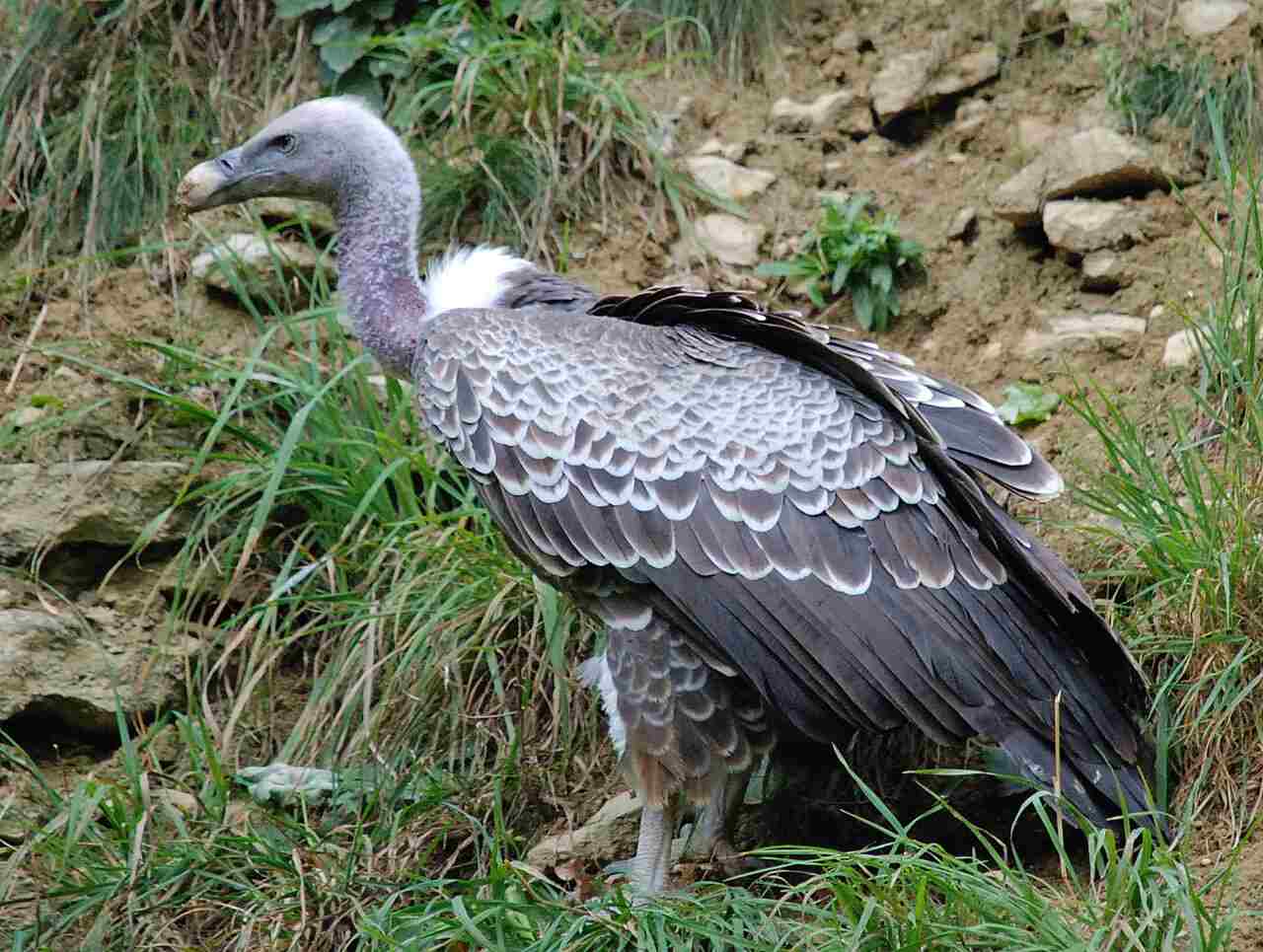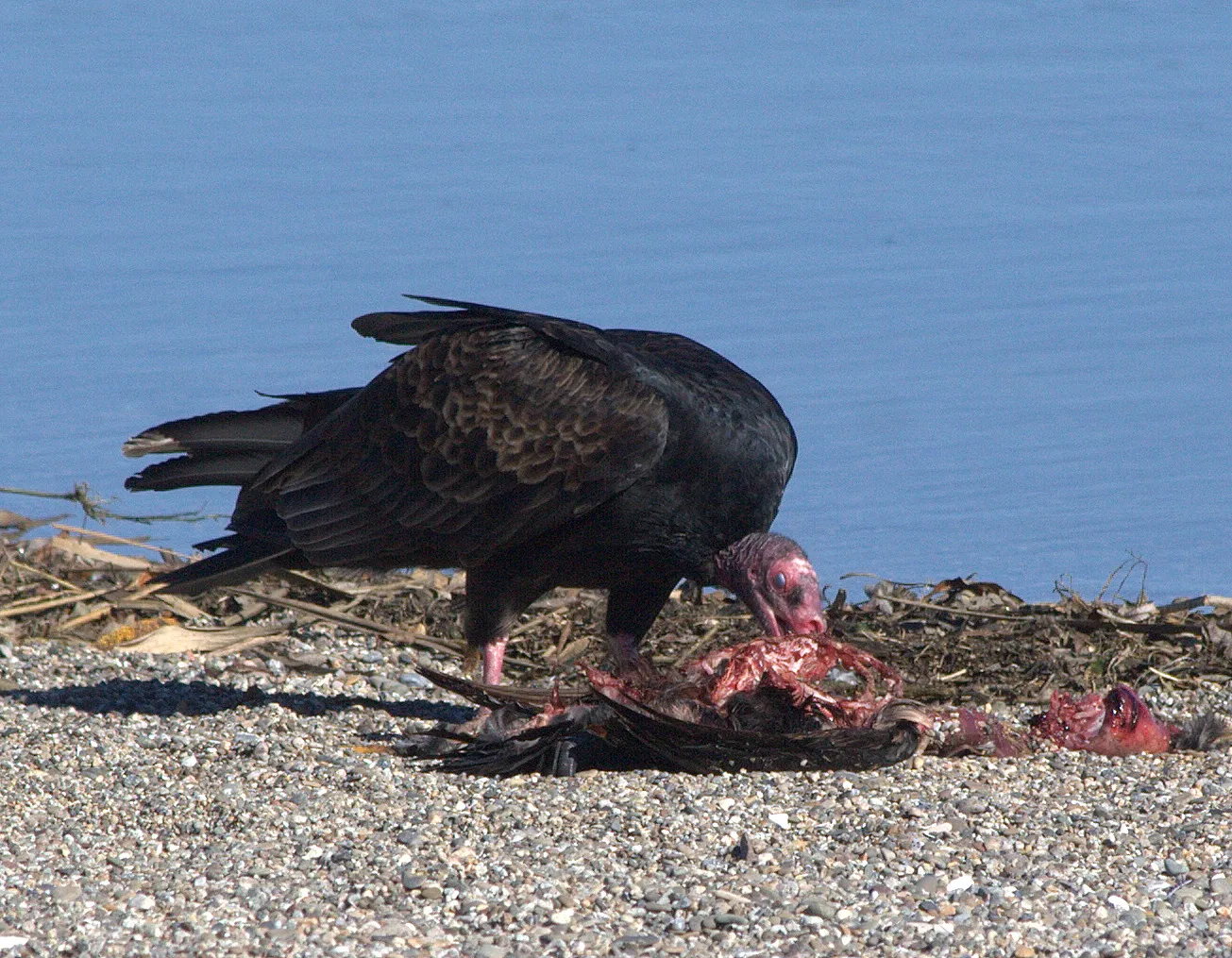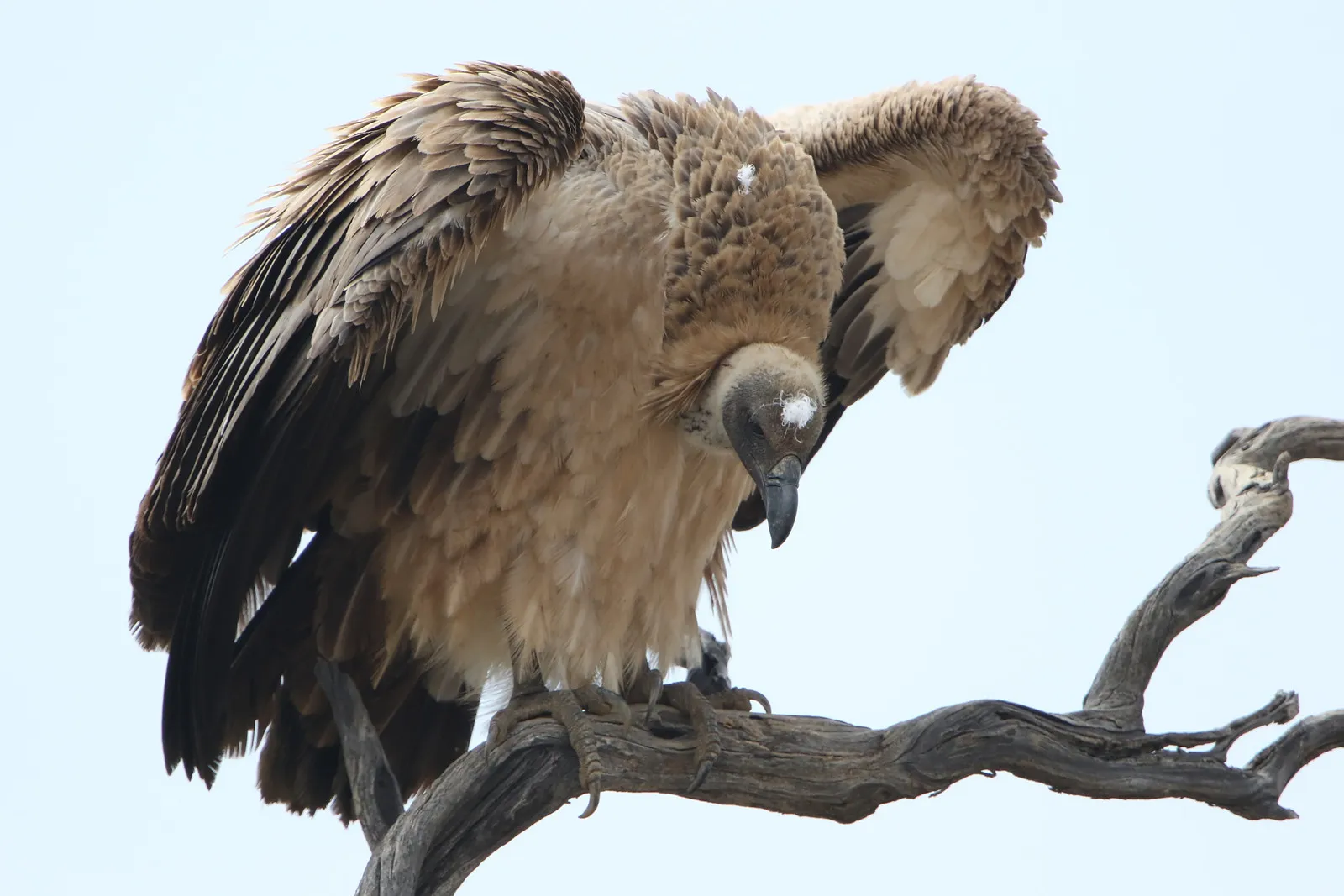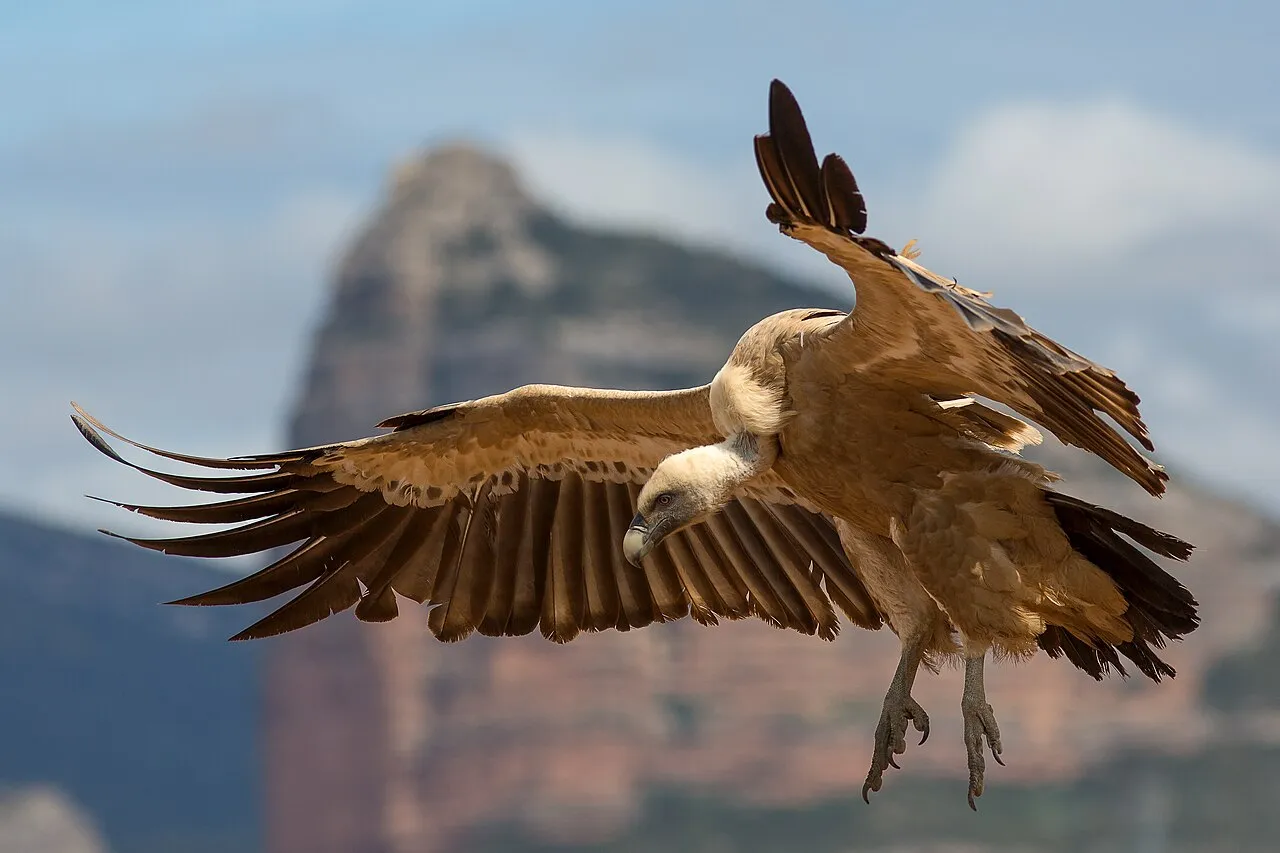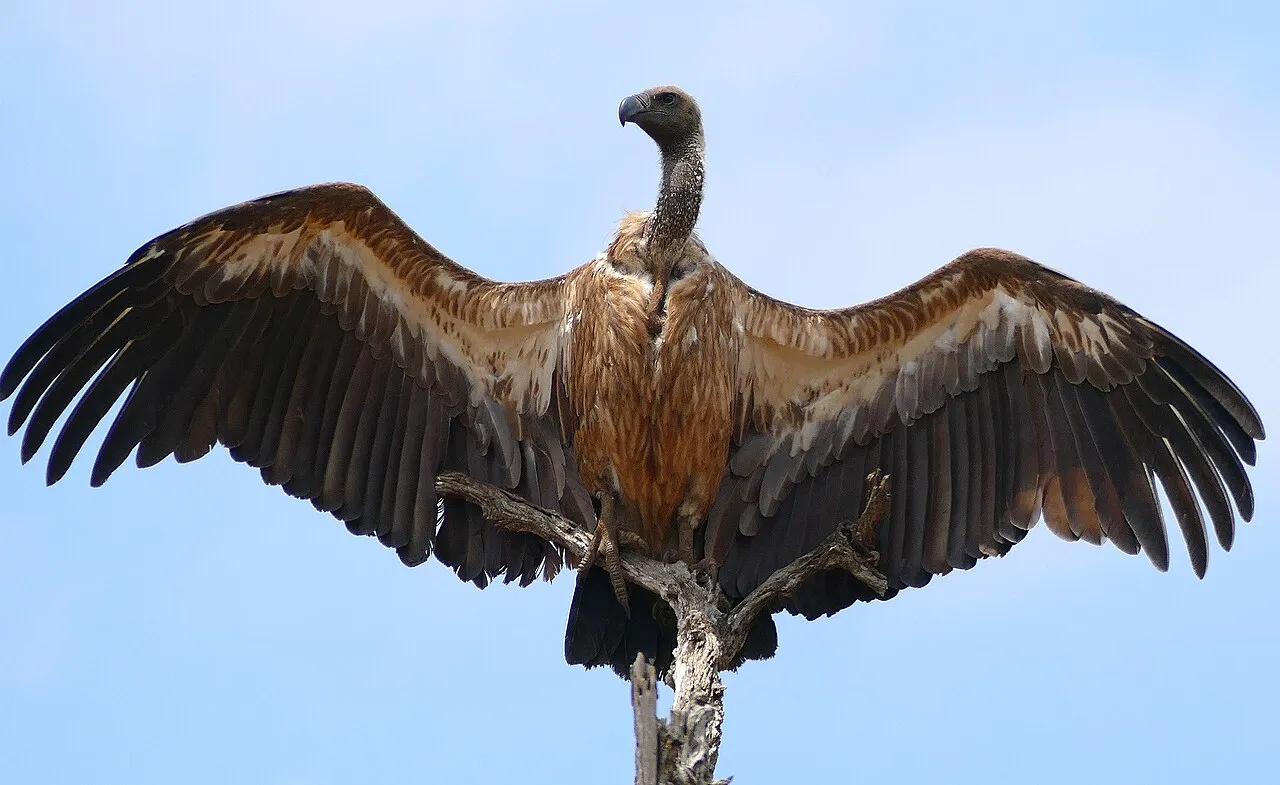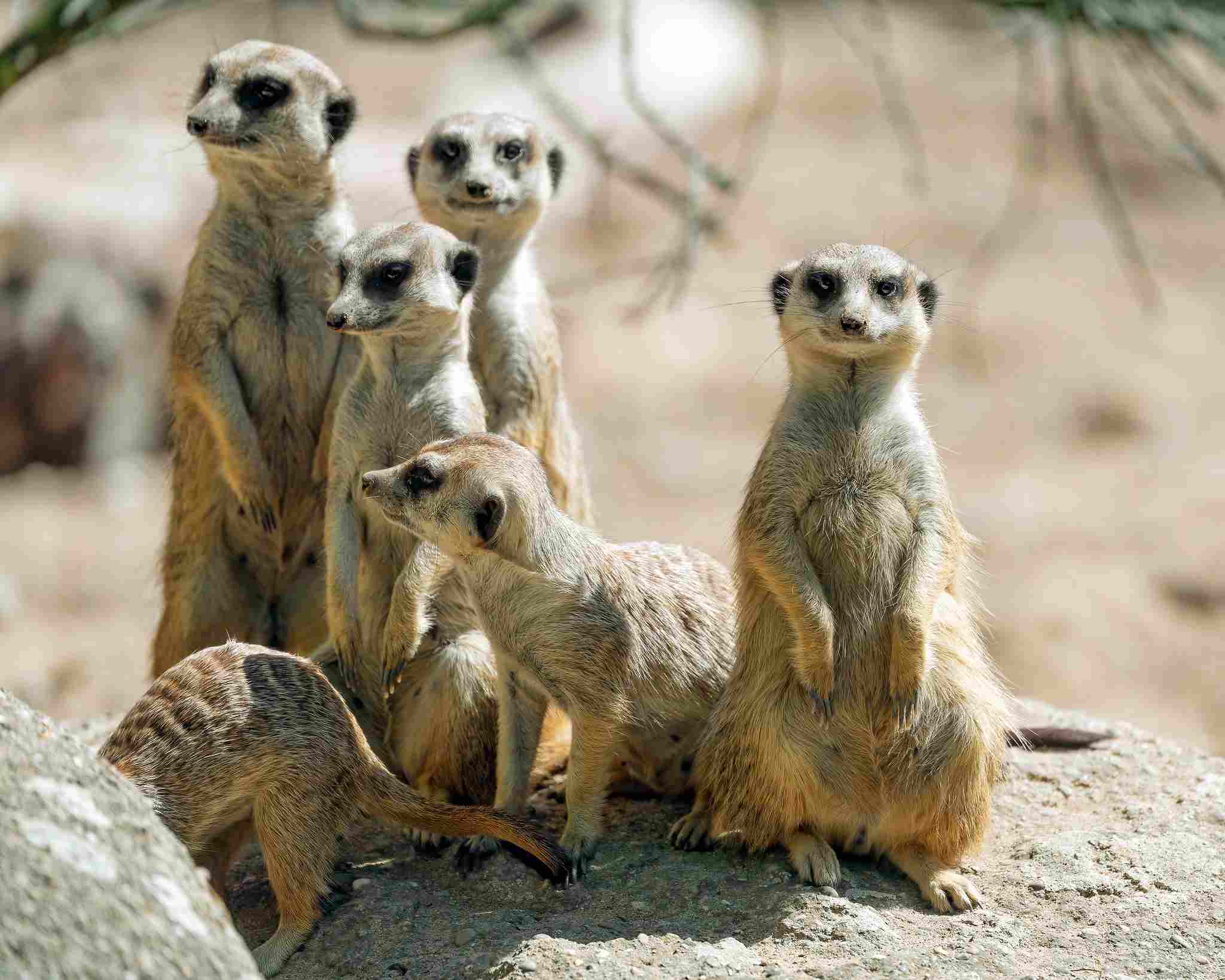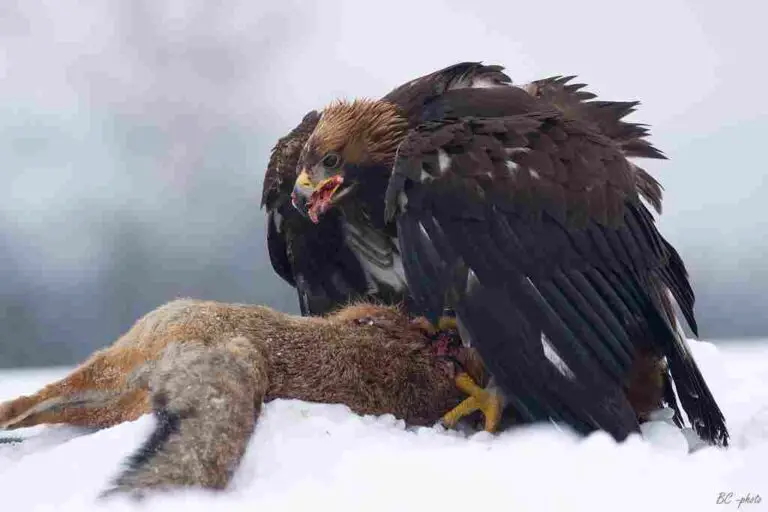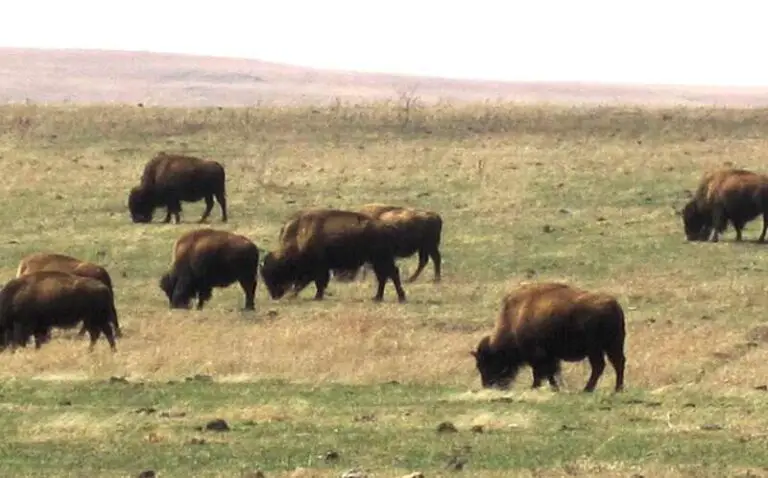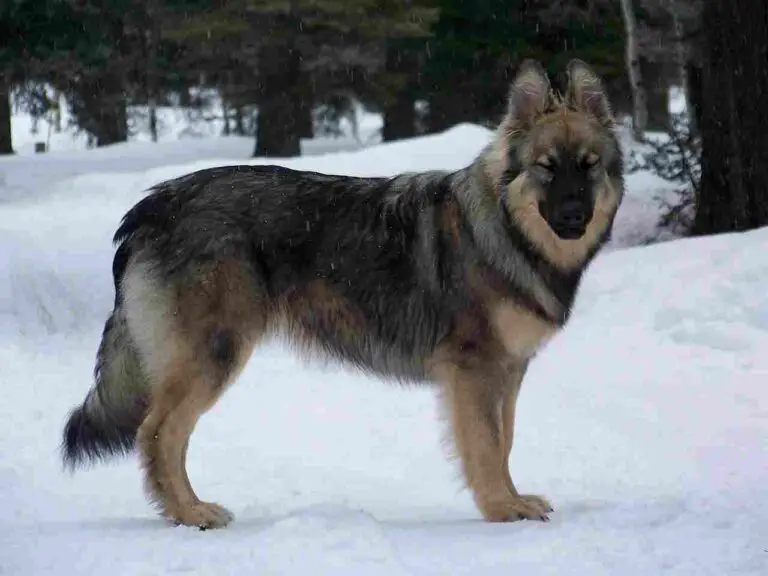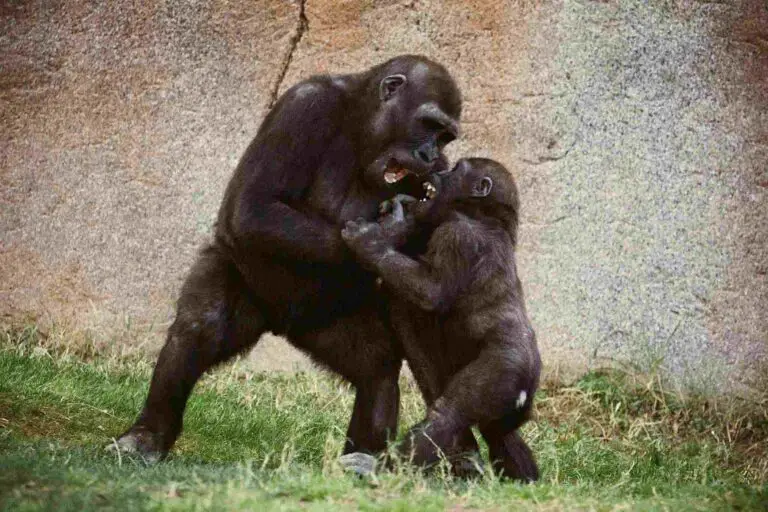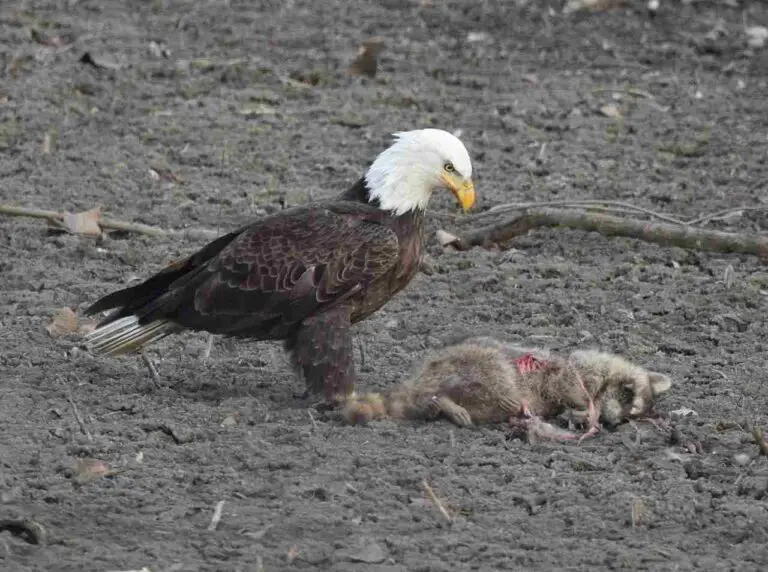Bearded Vulture Facts, Characteristics, Full Description
The bearded vulture, scientifically classified as Gypaetus barbatus, is a large bird inhabiting mountainous regions across Europe, Asia, and Africa. With its distinctive appearance, including a beard-like tuft of feathers on its chin, and impressive wingspan of up to 2.8 meters, it plays a vital role as an apex scavenger, efficiently consuming carrion and recycling nutrients, thereby contributing to ecosystem health. Despite being listed as “Near Threatened,” conservation efforts are crucial to safeguard its habitat and mitigate threats such as habitat loss and poisoning, ensuring the continued existence of this iconic species.
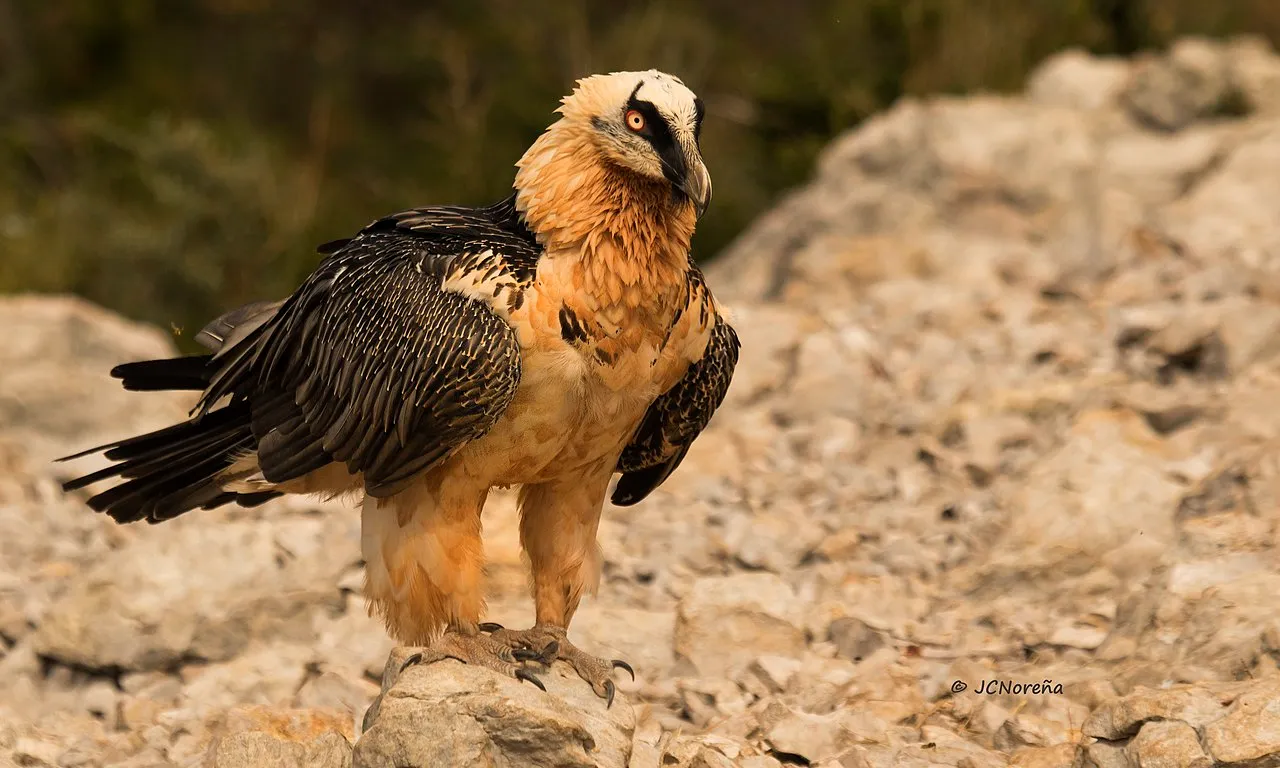
*Facts About Bearded Vultures
- Bearded vultures belong to the animal kingdom.
- They have a wingspan of up to 2.8 meters.
- Different subspecies include G. b. barbatus and G. b. meridionalis.
- Their diet mainly consists of carrion.
- They possess strong beaks for breaking bones.
- Bearded vultures are solitary birds for most of the year.
- Their distinctive feature is a beard-like tuft on the chin.
- They inhabit mountainous regions with cliffs and rocky outcrops.
- Bearded vultures are found across Europe, Asia, and Africa.
- They leave distinctive tracks in snow or mud.
- Breeding occurs in remote cliffs or rocky ledges.
- Individuals can live up to 30-40 years in the wild.
- Their conservation status is “Near Threatened.”
- Bearded vultures cannot be domesticated or kept as pets.
| Criteria | Summary |
| Scientific Classification |
Bearded vulture (Gypaetus barbatus) belongs to the Animalia kingdom, Chordata phylum, Aves class, Accipitriformes order, and Accipitridae family.
|
| Subspecies |
Different subspecies include G. b. barbatus, G. b. meridionalis, G. b. aureus, and G. b. hemachalanus.
|
| Size and Weight |
With a wingspan of up to 2.8 meters and weighing between 4.5 to 7.8 kilograms, they play an important role as apex scavengers in their ecosystems.
|
| Appearance and Identification |
Characterized by rusty to tawny feathers, black flight feathers, and a distinctive beard-like tuft on the chin, aiding in easy identification.
|
| Dentition and Bite Force |
Possessing strong, hooked beaks and powerful bite force, they efficiently consume bones and marrow, contributing to nutrient recycling.
|
| Diet |
Their scavenging behavior helps clean up carcasses and recycle nutrients, making them essential for ecosystem health.
|
| Behavior |
Solitary for much of the year, with impressive soaring abilities, they efficiently forage across mountainous regions.
|
| Sounds/Vocalization |
Various vocalizations aid in communication and social interactions, playing a role in behavior and territoriality.
|
| Habitat |
Inhabit mountainous regions with cliffs and rocky outcrops, necessitating habitat conservation for population viability.
|
| Geographic Range and Distribution |
Found across Europe, Asia, and Africa, their distribution reflects habitat availability and ecosystem diversity.
|
| Tracks |
Distinctive tracks provide information about presence and movements, aiding in studying behavior and habitat use.
|
| Reproduction |
Monogamous breeders nesting in remote cliffs or rocky ledges, their reproductive success is crucial for population stability.
|
| Lifespan |
With individuals living up to 30-40 years in the wild, longevity contributes to social learning and behavior transmission.
|
| Major Adaptations |
Specialized traits such as strong beaks and soaring abilities enable efficient scavenging, supporting ecosystem functioning.
|
| Conservation Status |
Listed as “Near Threatened,” conservation efforts are essential for maintaining population viability amidst various threats.
|
| Domestication and Suitability as a Pet |
Unsuitable for domestication or pet keeping, they belong in natural habitats to preserve biodiversity and prevent exploitation.
|
1). Scientific Classification
Kingdom: Animalia
Phylum: Chordata
Class: Aves
Order: Accipitriformes
Family: Accipitridae
Genus: Gypaetus
Species: Gypaetus barbatus
2). Subspecies
The bearded vulture has several subspecies, including Gypaetus barbatus barbatus, Gypaetus barbatus meridionalis, Gypaetus barbatus aureus, and Gypaetus barbatus hemachalanus.
Importance: Subspecies differentiation helps scientists understand the species’ evolutionary history and adaptability to different environments.
Ecological Implications: Subspecies distribution can indicate habitat preferences and ecological niches within the species’ range, aiding conservation efforts.
3). Size and Weight
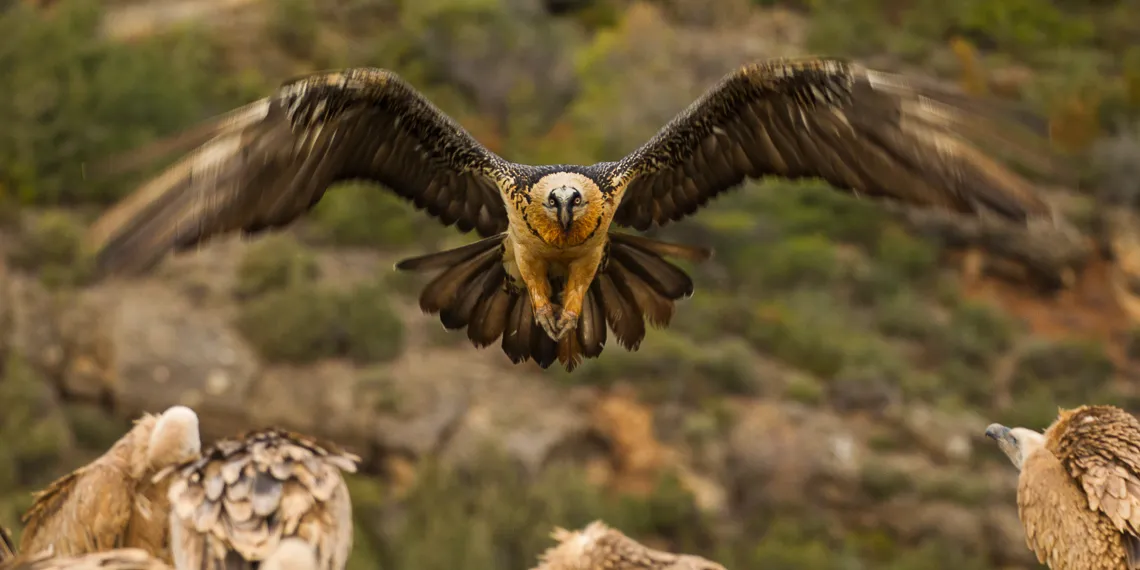
Bearded vultures are one of the largest flying birds in the world, with a wingspan reaching up to 2.8 meters (9.2 feet).
They typically weigh between 4.5 to 7.8 kilograms (10 to 17 pounds).
Importance: Understanding the size and weight of the species provides insights into its ecological role and energy requirements.
Ecological Implications: Their large size allows them to fulfill their role as apex scavengers in their ecosystems, aiding in nutrient cycling and maintaining ecosystem health.
4). Appearance and Identification
Bearded vultures are characterized by their striking appearance, with rusty to tawny feathers on their body and wings, contrasting with black flight feathers and tail.
They have a distinctive black beard-like tuft of feathers on their chin, which gives them their name.
Importance: Their unique appearance facilitates easy identification in the wild and aids researchers and conservationists in tracking populations.
Ecological Implications: Camouflage and conspicuousness play roles in predator avoidance and mate attraction, influencing the species’ survival and reproductive success.
5). Dentition and Bite Force
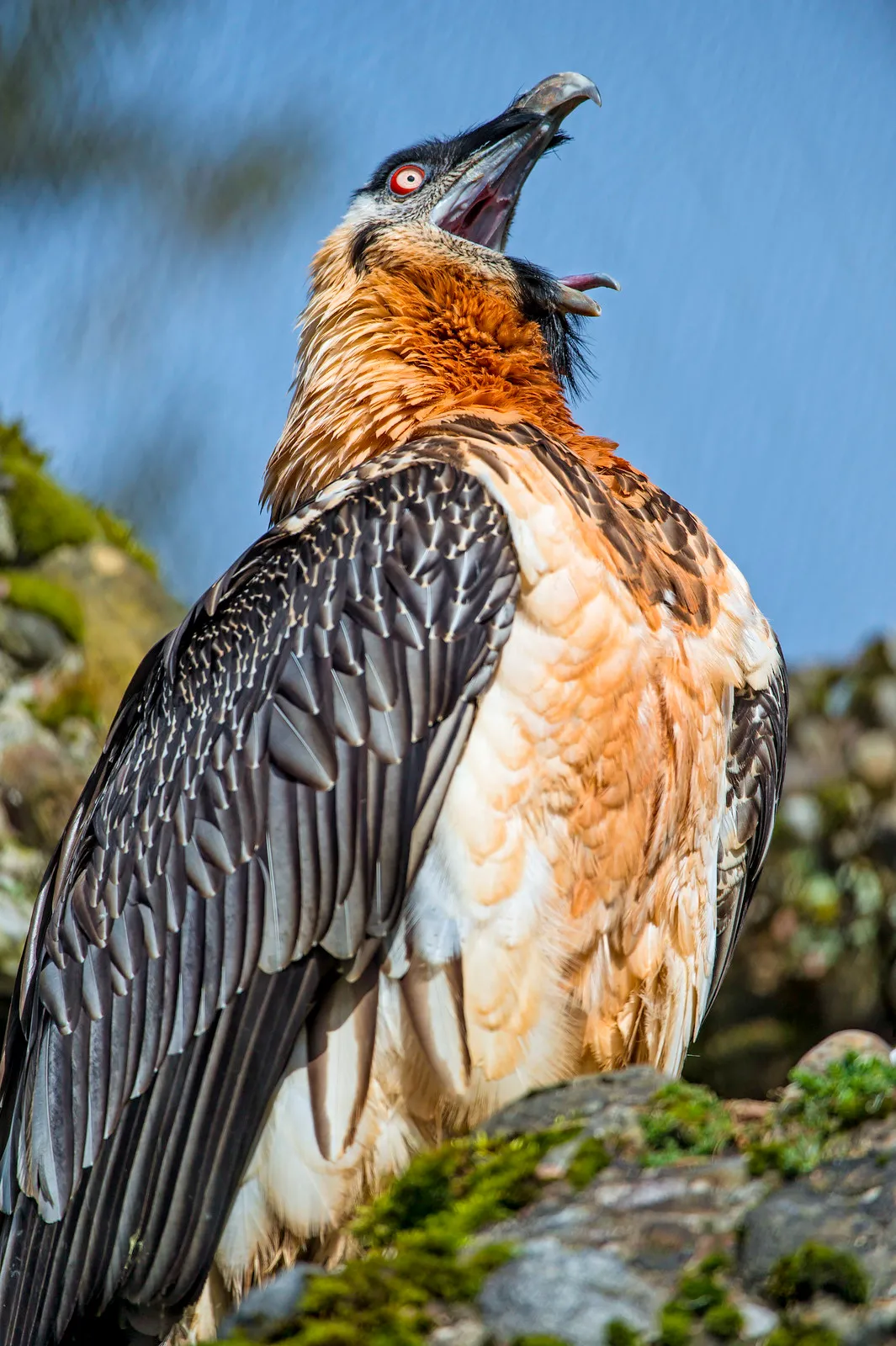
Bearded vultures have specialized adaptations for their scavenging diet, including a strong, hooked beak capable of breaking bones.
They possess a powerful bite force, allowing them to access the nutrient-rich marrow inside bones, a behavior known as osteophagy.
Importance: Their dentition and bite force are essential for their unique feeding habits, enabling them to exploit carcasses efficiently.
Ecological Implications: By consuming bone marrow, bearded vultures play a crucial role in nutrient recycling within ecosystems, reducing the spread of diseases from decaying carcasses and contributing to overall ecosystem health.
6). Diet
Bearded vultures are primarily scavengers, feeding mainly on carrion, including bones and bone marrow.
They have specialized adaptations for consuming bones, including a powerful digestive system that can dissolve bone matter.
Importance: Their scavenging behavior helps clean up carcasses, preventing the spread of diseases and recycling nutrients back into the ecosystem.
Ecological Implications: Bearded vultures are essential for maintaining ecological balance by consuming carrion that other animals may not eat, thus reducing waste and preventing the buildup of carcasses in the environment.
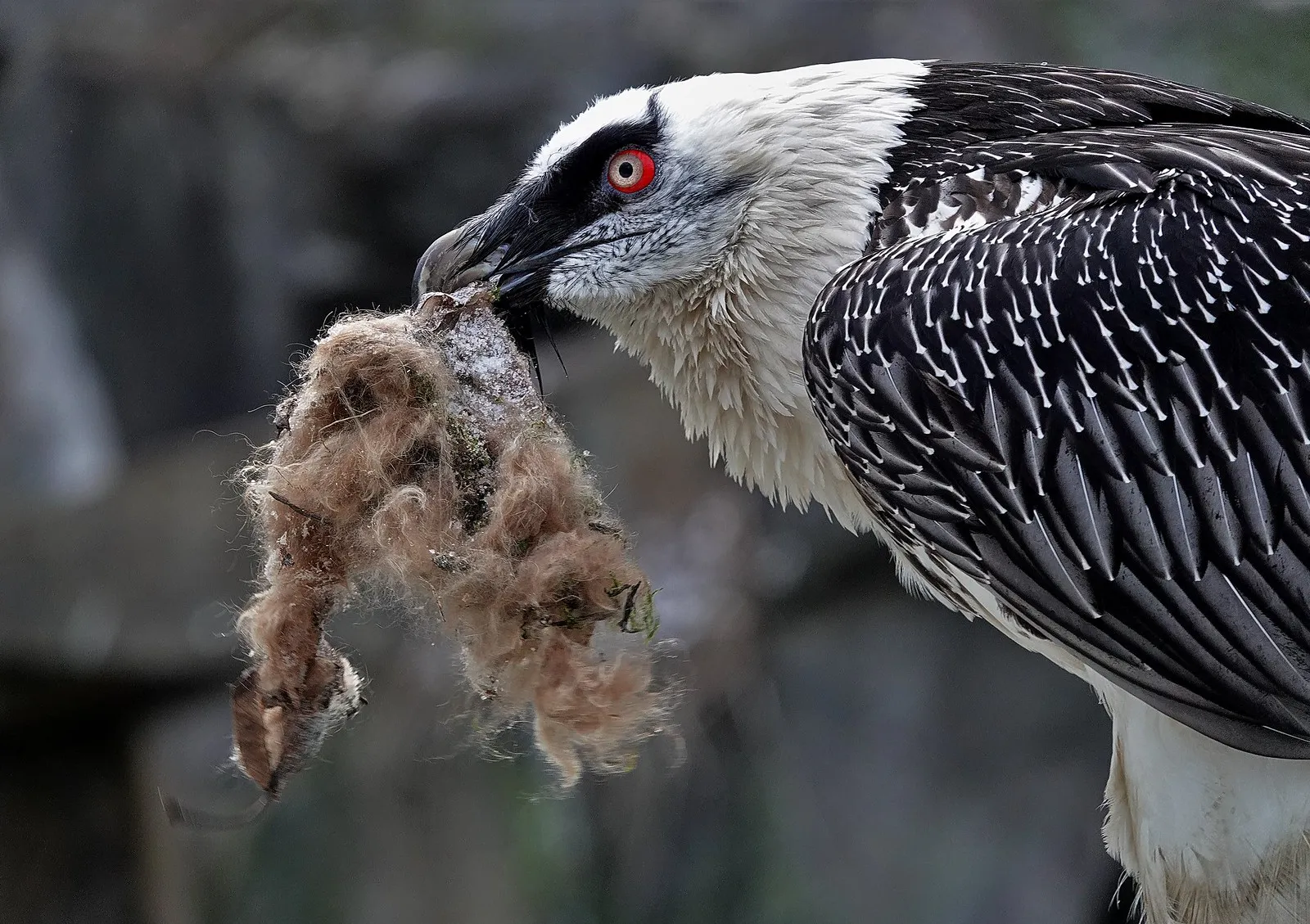
7). Behavior
Bearded vultures are solitary birds for much of the year, only coming together during the breeding season.
They are known for their impressive soaring abilities, often riding thermals to great heights in search of carrion.
Importance: Understanding their behavior is crucial for conservation efforts, as it helps identify important habitat areas and breeding sites.
Ecological Implications: Their soaring behavior allows them to cover large distances efficiently, contributing to their role as scavengers and aiding in ecosystem maintenance.
8). Sounds/Vocalization
Bearded vultures are generally quiet birds, but they may produce various vocalizations during breeding displays or interactions with conspecifics.
Vocalizations can include hisses, croaks, and grunts, often used during courtship and territorial disputes.
Importance: Vocalizations play a role in communication and social interactions among individuals.
Ecological Implications: Understanding their vocalizations can provide insights into their behavior and social structure, aiding in conservation efforts by identifying breeding sites and potential threats.
9). Habitat
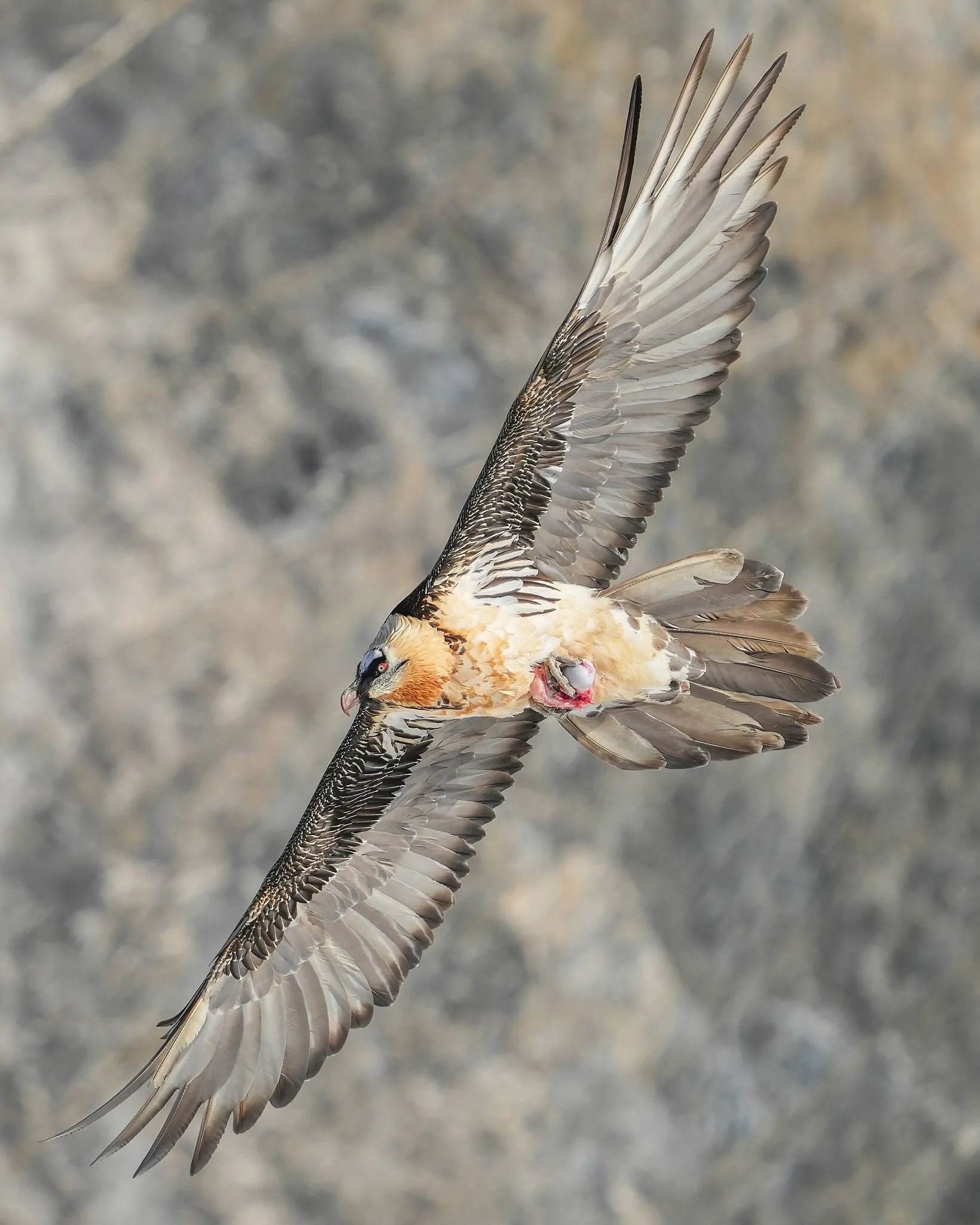
Bearded vultures inhabit mountainous regions, preferring rugged terrain with cliffs and rocky outcrops.
They are commonly found in alpine and subalpine habitats, ranging from Europe and Africa to Asia.
Importance: Their habitat preferences dictate their distribution and abundance, making habitat conservation essential for their survival.
Ecological Implications: Protecting their habitat ensures the availability of suitable nesting sites and foraging areas, contributing to the long-term viability of bearded vulture populations.
10). Geographic Range and Distribution
Bearded vultures have a wide but fragmented distribution, spanning mountainous regions across Europe, Asia, and Africa.
They are found in the Alps, Pyrenees, Caucasus, Himalayas, and various mountain ranges in Africa.
Importance: Understanding their range helps identify areas where conservation efforts are needed and assess population trends.
Ecological Implications: Their distribution reflects the availability of suitable habitats and prey resources, highlighting the importance of preserving mountain ecosystems.
11). Tracks
Bearded vultures leave distinctive tracks in snow or mud, often showing claw marks and the imprint of their large feet.
These tracks can provide valuable information about their presence in an area and their movements.
Importance: Tracking bearded vultures through their footprints aids researchers in studying their behavior and habitat use.
Ecological Implications: Monitoring tracks can help assess population densities and distribution patterns, informing conservation strategies aimed at protecting their habitats.
12). Reproduction
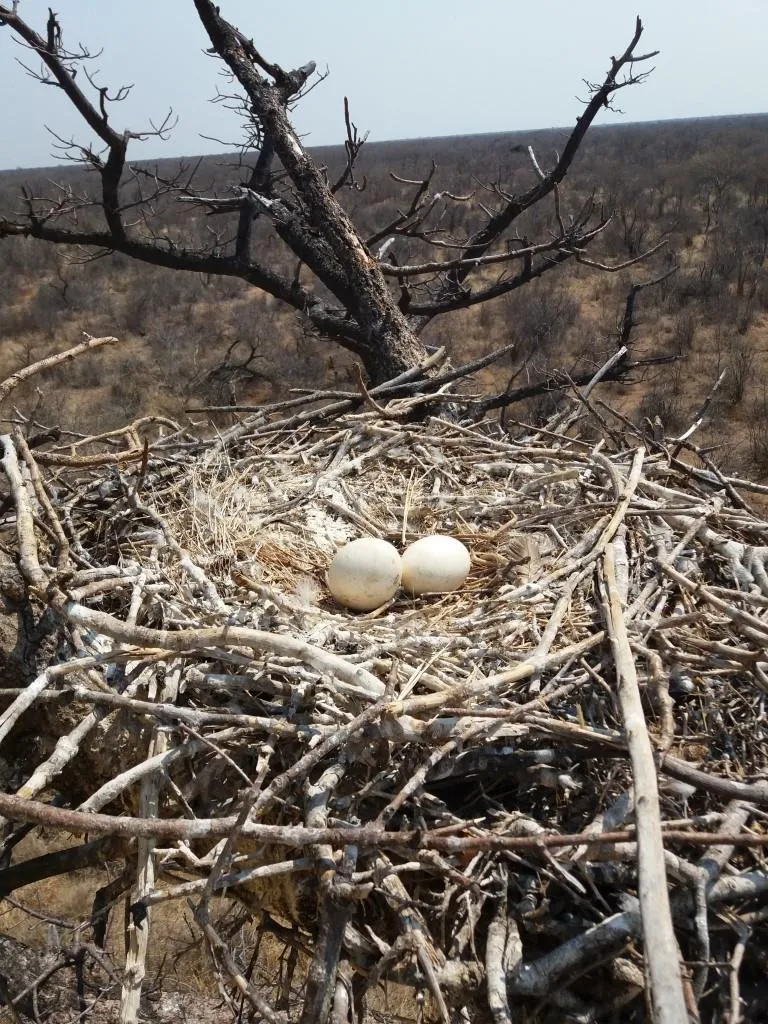
Bearded vultures are monogamous and form long-term pair bonds.
Breeding occurs in remote cliffs or rocky ledges, where they build large nests made of sticks, wool, and bones.
Importance: Understanding their reproductive biology is crucial for conservation efforts aimed at maintaining viable breeding populations.
Ecological Implications: Successful reproduction contributes to population stability and genetic diversity, which are essential for the long-term survival of the species.
13). Lifespan
Bearded vultures have a relatively long lifespan, with individuals in the wild living up to 30-40 years.
Captive individuals may live even longer, with some reaching 50 years of age or more.
Importance: Longevity influences population dynamics and conservation strategies, as older individuals contribute to breeding and genetic diversity.
Ecological Implications: Long lifespans allow individuals to accumulate knowledge and experience, potentially benefiting younger generations through social learning and behavior transmission.
14). Major Adaptations
Bearded vultures have several adaptations that make them well-suited for their scavenging lifestyle, including:
Strong, hooked beaks capable of breaking bones to access marrow.
Acidic digestive systems that can dissolve bone matter, allowing them to extract nutrients efficiently.
Excellent soaring abilities, enabling them to cover vast distances in search of carrion.
Importance: These adaptations are essential for their survival and success as scavengers in mountainous habitats.
Ecological Implications: Their specialized adaptations allow them to exploit a niche as bone-eating scavengers, contributing to nutrient recycling and ecosystem health.
15). Conservation Status
Bearded vultures are listed as “Near Threatened” on the IUCN Red List of Threatened Species.
Threats to their survival include habitat loss, disturbance at nesting sites, poisoning from ingesting lead ammunition in carcasses, and collisions with power lines.
Importance: Conservation efforts are crucial to ensure the long-term survival of bearded vulture populations and the ecosystems they inhabit.
Ecological Implications: Protecting bearded vultures helps maintain biodiversity and ecosystem functioning in mountainous regions, where they play a vital role as scavengers and ecosystem engineers.
16). Domestication and Suitability as a Pet
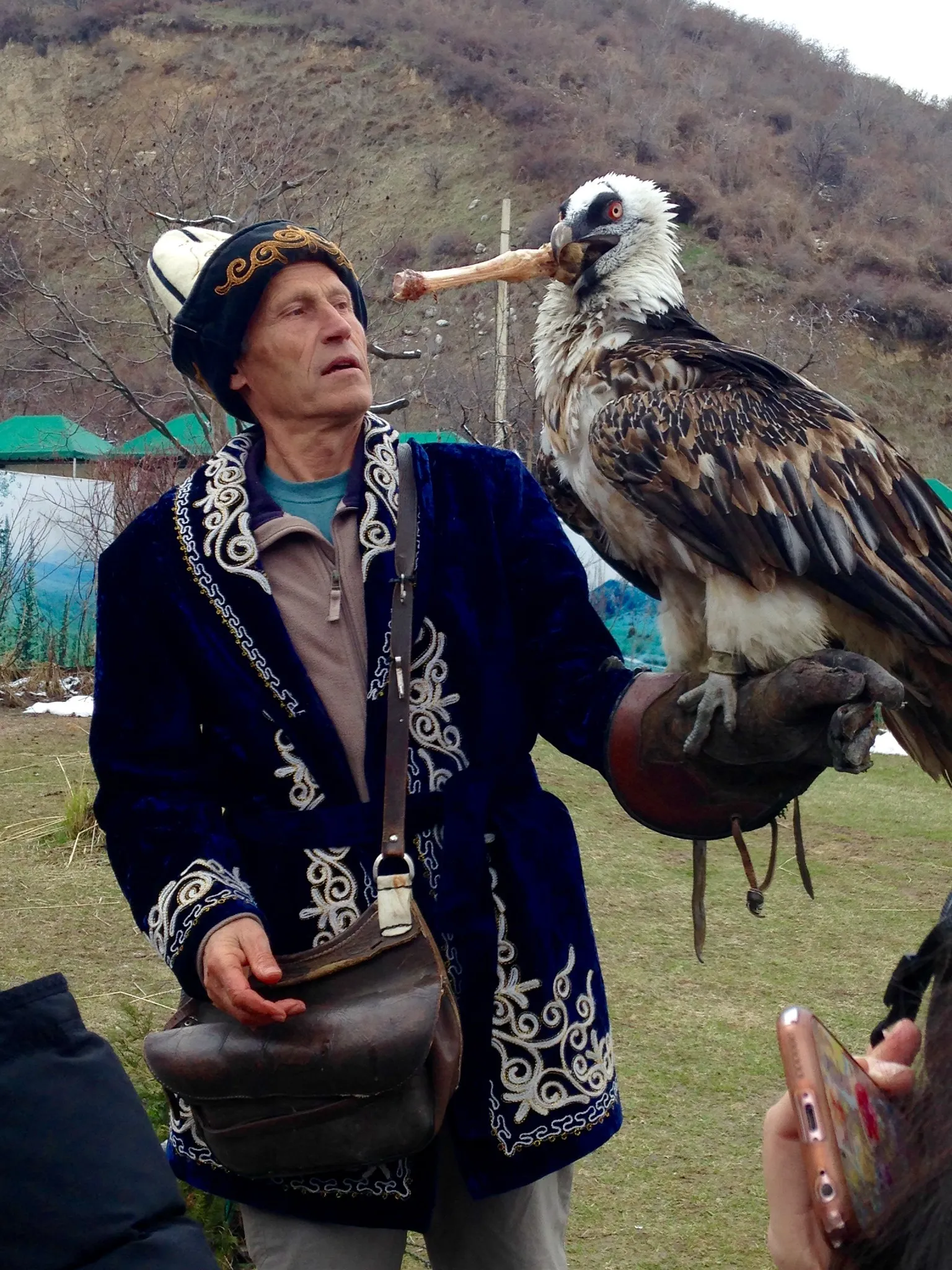
Bearded vultures are wild birds and are not suitable for domestication or as pets.
Keeping them in captivity requires specialized facilities and permits due to their large size, specialized diet, and natural behaviors.
Importance: Wild animals like bearded vultures belong in their natural habitats and should not be kept as pets.
Ecological Implications: Encouraging responsible stewardship of wildlife helps preserve natural ecosystems and protects species from exploitation and illegal trade.
*Summary of Information On Bearded Vultures
Scientific Classification
Kingdom: Animalia
Phylum: Chordata
Class: Aves
Order: Accipitriformes
Family: Accipitridae
Genus: Gypaetus
Species: Gypaetus barbatus
Subspecies
Different subspecies include Gypaetus barbatus barbatus, Gypaetus barbatus meridionalis, Gypaetus barbatus aureus, and Gypaetus barbatus hemachalanus.
Importance: Subspecies differentiation aids in understanding evolutionary history and adaptability.
Ecological Implications: Subspecies distribution reflects habitat preferences and ecological niches, guiding conservation efforts.
Size and Weight
Bearded vultures have a wingspan of up to 2.8 meters and weigh between 4.5 to 7.8 kilograms.
Importance: Size and weight provide insights into ecological roles and energy requirements.
Ecological Implications: Their large size allows them to act as apex scavengers, contributing to ecosystem health.
Appearance and Identification
Characterized by rusty to tawny feathers, black flight feathers, and a distinctive beard-like tuft on the chin.
Importance: Unique appearance aids in identification and tracking.
Ecological Implications: Appearance influences predator avoidance and mate attraction, impacting survival and reproduction.
Dentition and Bite Force
Possess strong, hooked beaks and powerful bite force for breaking bones and accessing marrow.
Importance: Adaptations facilitate efficient feeding on carrion.
Ecological Implications: Bone consumption aids in nutrient recycling and ecosystem maintenance.
Diet
Primarily scavengers, feeding on carrion including bones and marrow.
Importance: Scavenging behavior cleans up carcasses and recycles nutrients.
Ecological Implications: Role in nutrient recycling and carcass disposal benefits ecosystem health.
Behavior
Solitary for much of the year, with impressive soaring abilities.
Importance: Behavior informs conservation efforts and habitat protection.
Ecological Implications: Soaring behavior aids in efficient foraging and ecosystem monitoring.
Sounds/Vocalization
Produce various vocalizations during breeding displays and interactions.
Importance: Vocalizations aid in communication and social interactions.
Ecological Implications: Understanding vocalizations helps assess behavior and social structure, guiding conservation strategies.
Habitat
Inhabit mountainous regions with cliffs and rocky outcrops.
Importance: Habitat preferences dictate distribution and abundance.
Ecological Implications: Protecting habitats ensures nesting sites and foraging areas, supporting population viability.
Geographic Range and Distribution
Found in mountainous regions across Europe, Asia, and Africa.
Importance: Range indicates conservation priorities and population trends.
Ecological Implications: Distribution reflects habitat availability and ecosystem diversity.
Tracks
Leave distinctive tracks in snow or mud, providing information about presence and movements.
Importance: Tracks aid in studying behavior and habitat use.
Ecological Implications: Tracking helps assess population dynamics and conservation needs.
Reproduction
Monogamous breeders nesting in remote cliffs or rocky ledges.
Importance: Reproductive success crucial for population stability.
Ecological Implications: Successful reproduction maintains genetic diversity and population viability.
Lifespan
Individuals can live up to 30-40 years in the wild and even longer in captivity.
Importance: Lifespan influences population dynamics and conservation strategies.
Ecological Implications: Longevity contributes to social learning and behavior transmission.
Major Adaptations
Specialized beaks, digestive systems, and soaring abilities for scavenging.
Importance: Adaptations enable efficient feeding and survival.
Ecological Implications: Specialized traits contribute to ecosystem functioning and nutrient cycling.
Conservation Status
Listed as “Near Threatened” due to habitat loss, poisoning, and other threats.
Importance: Conservation efforts crucial for population survival.
Ecological Implications: Protecting bearded vultures maintains biodiversity and ecosystem balance.
Domestication and Suitability as a Pet
Wild birds unsuitable for domestication or pet keeping.
Importance: Wildlife belongs in natural habitats, not as pets.
Ecological Implications: Responsible stewardship preserves natural ecosystems and prevents exploitation.
